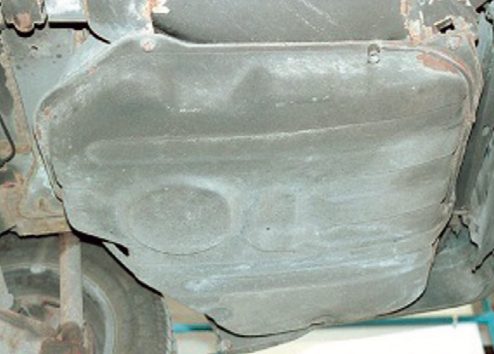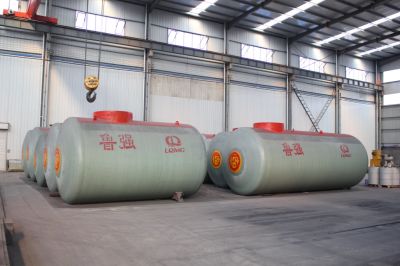Steel fuel tanks are commonly used in the automotive and marine industries for storing fuel. These tanks are typically made of steel due to its durability, strength, and resistance to corrosion. Steel fuel tanks are also known for their ability to withstand extreme temperatures and pressures.
One important factor to consider when installing a steel fuel tank is its position. The position of the tank can impact its safety, efficiency, and overall performance. Here are some things to consider when positioning a steel fuel tank:
- Ground clearance: The steel fuel tank should be positioned high enough to ensure sufficient ground clearance. This will prevent the tank from being damaged by rocks or other debris on the road or waterway.
- Ventilation: Proper ventilation is essential to prevent the buildup of dangerous gases inside the tank. The tank should be positioned in a well-ventilated area, preferably outdoors.
- Accessibility: The steel fuel tank should be easily accessible for inspection, maintenance, and repairs. The position of the tank should allow for easy access to the fill port, drain valve, and other components.
- Balance: The steel fuel tank should be positioned to maintain proper balance and stability. Uneven weight distribution can affect the performance of the vehicle or vessel, and can also increase the risk of accidents.
- Protection: The steel fuel tank should be protected from external factors such as impact or collision. The tank should be securely mounted to prevent it from shifting or moving during operation.
- Regulations: It is important to comply with all relevant regulations when positioning a steel fuel tank. Regulations may vary depending on the type of vehicle or vessel, the fuel capacity, and other factors.
In conclusion, the position of a steel fuel tank is an important factor that can impact its safety, efficiency, and performance. Proper positioning requires consideration of factors such as ground clearance, ventilation, accessibility, balance, protection, and regulations. By taking these factors into account, you can ensure that your steel fuel tank is installed in a way that meets your needs and complies with all relevant regulations.
- Ground clearance: It’s important to ensure that the tank is positioned high enough to prevent it from being damaged by obstacles on the road or waterway. The height of the tank should be determined by the type of vehicle or vessel and the conditions it will operate in. For example, an off-road vehicle may require a higher tank to clear rocks and other debris, while a boat may require a lower tank to maintain stability in rough seas.
- Ventilation: Steel fuel tanks require proper ventilation to prevent the buildup of harmful gases, such as fuel vapors, inside the tank. This is important for safety reasons, as fuel vapors can be explosive. The tank should be positioned in a well-ventilated area, preferably outdoors, to allow for proper air circulation. The ventilation system should also be designed to prevent the entry of moisture or other contaminants into the tank.
- Accessibility: The steel fuel tank should be easily accessible for inspection, maintenance, and repairs. This includes access to the fill port, drain valve, and other components. The tank should be positioned in a way that allows for easy access to these components, without requiring the removal of other parts or components. This will make it easier to perform routine maintenance tasks and repairs, and can also help to reduce downtime.
- Balance: The position of the steel fuel tank can affect the balance and stability of the vehicle or vessel. Uneven weight distribution can lead to handling issues, such as poor steering or stability. The tank should be positioned in a way that maintains proper balance, taking into account the weight of the fuel and other components. This may require adjustments to the position of other components, such as the engine or batteries.
- Protection: The steel fuel tank should be protected from external factors that can cause damage, such as impact or collision. This can be achieved by mounting the tank securely and using protective materials, such as foam padding or rubber gaskets. The tank should also be positioned in a way that reduces the risk of damage from road debris or other hazards.
- Regulations: The position of the steel fuel tank may be regulated by local or national regulations, depending on the type of vehicle or vessel and the fuel capacity. Regulations may dictate the location of the tank, the type of materials used, and the ventilation and safety requirements. It’s important to ensure that the tank is positioned in a way that complies with all relevant regulations, to avoid fines or other penalties.

In summary, the position of a steel fuel tank is a critical factor that can impact its safety, efficiency, and performance. By considering factors such as ground clearance, ventilation, accessibility, balance, protection, and regulations, you can ensure that the tank is installed in a way that meets your needs and complies with all relevant requirements.
Advantages of Steel Fuel Tanks:
- Durability: Steel fuel tanks are known for their durability and resistance to wear and tear. They can withstand extreme temperatures, pressures, and other harsh conditions.
- Strength: Steel is a strong and sturdy material that can withstand impact and other types of damage. Steel fuel tanks are less likely to crack or leak than other materials.
- Corrosion Resistance: Steel fuel tanks are resistant to corrosion, which helps to prevent rust and other types of damage. This can extend the lifespan of the tank and reduce the need for repairs or replacements.
- Low Cost: Steel is a relatively inexpensive material, which makes it a cost-effective choice for fuel tanks. Steel fuel tanks can be produced in large quantities at a lower cost than other materials.
- Easy to Fabricate: Steel fuel tanks can be easily fabricated into different shapes and sizes to meet specific requirements. This allows for greater flexibility and customization in tank design.
Disadvantages of Steel Fuel Tanks:
- Weight: Steel fuel tanks are heavier than some other materials, such as plastic or aluminum. This can add to the overall weight of the vehicle or vessel, which can impact fuel efficiency and performance.
- Corrosion: While steel is resistant to corrosion, it is still vulnerable to rust and other types of damage over time. Proper maintenance and care is required to prevent corrosion from affecting the tank.
- Welding Required: Steel fuel tanks typically require welding to join the different parts together. This can add to the production time and cost, as well as the risk of weld-related defects or failures.
- Limited Design Options: While steel fuel tanks can be fabricated into different shapes and sizes, they may not be as versatile in design as other materials. This can limit the options for customization and aesthetic design.
- Environmental Concerns: Steel production can have negative environmental impacts, such as air pollution and greenhouse gas emissions. Proper disposal of old or damaged steel fuel tanks is also important to prevent environmental contamination.
In conclusion, steel fuel tanks have several advantages, such as durability, strength, and corrosion resistance. However, they also have some disadvantages, including weight, welding requirements, limited design options, and environmental concerns. When selecting a fuel tank material, it’s important to consider the specific needs and requirements of the application, as well as the advantages and disadvantages of each material option.










